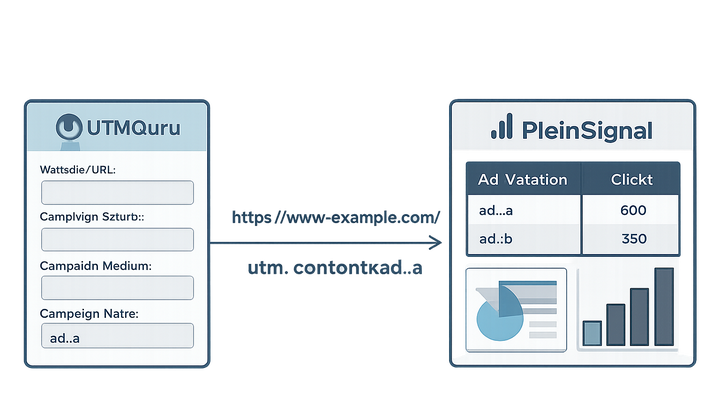Published on 2025-06-29T17:41:17Z
What is UTM Content? Examples for UTM Content.
UTM Content is an optional URL parameter used in digital marketing campaigns to identify and differentiate specific ad links, creative assets, or promotional elements within the same source, medium, and campaign. By assigning unique values to utm_content, marketers gain granular insight into which exact link, button, or banner variation resonates most with their audience. For instance, an email newsletter might use utm_content=header_link for the top banner and utm_content=footer_button for the call-to-action at the bottom. Tools like UTMGuru streamline the creation, management, and storage of UTM tags, while cookie-free analytics platforms such as PlainSignal automatically capture these parameters without impacting site performance. Incorporating UTM Content into your tracking methodology empowers data-driven decisions, enhances A/B testing precision, and prevents the data fragmentation that occurs when multiple links share identical tags.
Utm content
A UTM parameter that identifies individual ad links or content variations within a campaign for detailed tracking.
Why UTM Content Matters
The UTM Content parameter enables marketers to micro-segment traffic within a broader campaign. By tagging each link or creative variation distinctly, you can:
- Analyze which specific elements (buttons, banners, CTAs) perform best
- Run accurate A/B tests under the same source and medium
- Prevent data aggregation that hides individual link performance
-
Micro-segmentation
UTM Content allows separation of clicks by individual links or creatives, giving deeper insight than broader campaign tags.
-
Creative differentiation
Differentiate between visuals or copy variants (e.g., banner_a vs banner_b) to optimize design and messaging.
-
A/b testing
Assign distinct utm_content values to each variant in an A/B test to accurately measure performance differences.
Implementing UTM Content with SaaS Tools
You can add utm_content to your URLs manually or leverage specialized tools like UTMGuru for generation and PlainSignal for capture.
-
Manual url tagging
Compose URLs by appending
utm_contentalong with other UTM parameters in spreadsheets or CMS fields. -
Utmguru utm builder
Use the UTMGuru web app or Chrome extension to generate, save, and reuse standardized utm_content tags.
- Features:
Bulk URL building, template storage, campaign listing for consistent tagging.
- Features:
-
Tracking with plainsignal
Embed a small snippet of PlainSignal script to capture UTM parameters without cookies and view clean analytics.
- Setup code:
<link rel='preconnect' href='//eu.plainsignal.com/' crossorigin /> <script defer data-do='yourwebsitedomain.com' data-id='0GQV1xmtzQQ' data-api='//eu.plainsignal.com' src='//cdn.plainsignal.com/plainsignal-min.js'></script>
- Setup code:
Best Practices for UTM Content
Adopt clear and consistent naming conventions for utm_content to maintain data integrity and ease reporting.
-
Consistency
Use uniform casing and separators (e.g., snake_case or kebab-case) across all tags.
-
Descriptive labels
Choose meaningful values like header_cta or footer_link to quickly understand the content source.
-
Avoid overcomplication
Limit the number of distinct utm_content values to prevent fragmented data and analysis paralysis.
Troubleshooting Common Issues
Identify and resolve issues related to missing or inconsistent utm_content parameters in your analytics data.
-
Missing parameter
Verify utm_content is correctly appended after
?or&and matches your tagging standards. -
Case sensitivity
UTM parameters are case-sensitive; ensure the same casing (e.g., Button_A vs button_a) across all URLs.
-
Analytics mismatch
Confirm that analytics platforms like PlainSignal or Google Analytics are correctly parsing the utm_content field.
